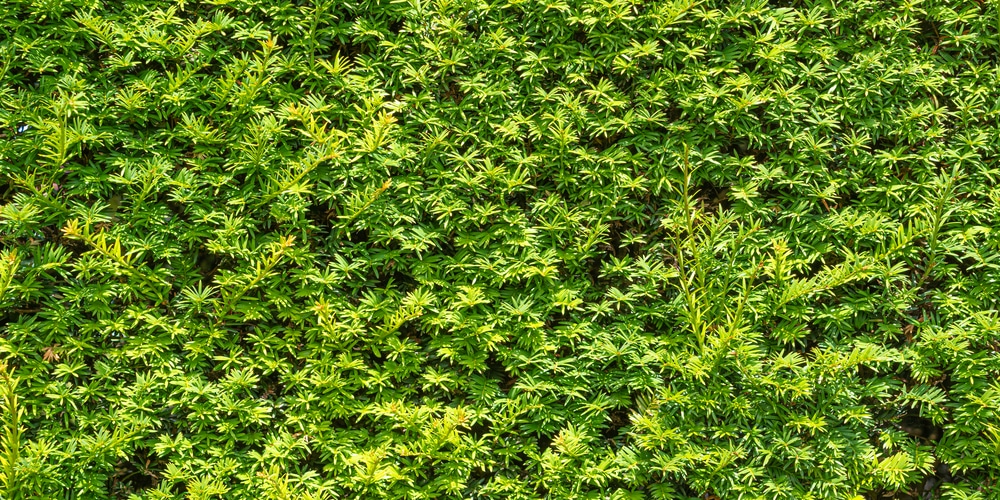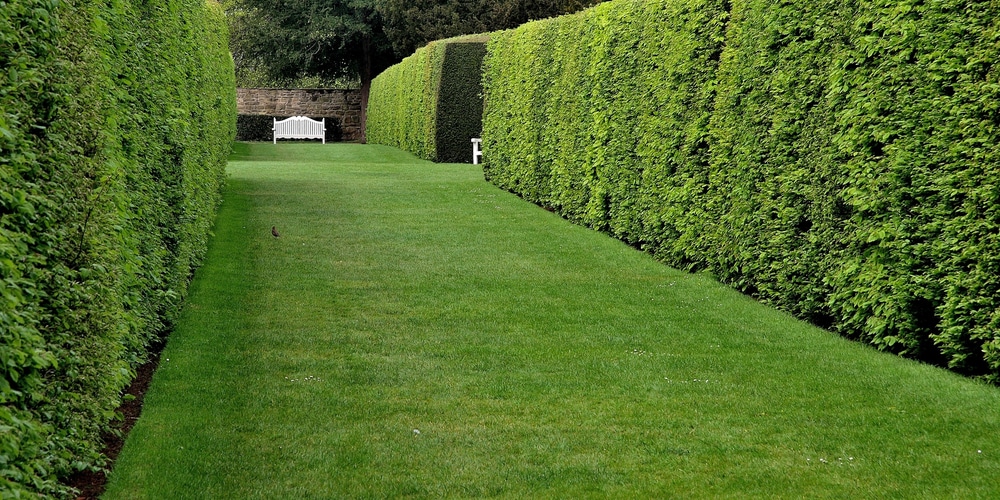Yew hedges are versatile evergreen shrubs that many gardeners choose to add as borders and screens around their properties. These plants are easy to grow and not demanding.
Also, they will adapt to most growing conditions and might increase the looks of your outdoor spaces. Yew hedges produce cones instead of flowers and will display red (but toxic) berries. While the plant is relatively low maintenance, it will benefit from trimming. However, you must do it the right way if you want to have satisfactory results.
If you don’t know where to start, don’t worry! In this essential guide, we collected everything you must know before trimming your yew hedge.
When to Trim Your Yew Hedge

Before getting into the best ways to trim your yew hedge, it might be worth noting when to do so to get the best results out of this practice.
Indeed, clipping your plant at the wrong time of the year can have unpleasant consequences. For instance, it may stress your plant, minimize its chances of recovery, and even make it more susceptible to attacks from pests and diseases.
Of course, the exact date for trimming your yew hedge will depend on your local climate. However, late fall (between August and October) is usually the best time to clip your plant.
It will allow your yew hedge enough time to recover and will encourage new growth during the spring. So, your plant will look denser and lusher, increasing your garden’s aesthetics. However, remember not to trim your plant too often, or you might prevent it from recovering.
Alternatively, you can trim your hew hedge in the early spring. However, you must be more careful at this time of the year. Even if yews can grow on the old wood, you should avoid cutting the sprouts that your plant displays. Also, you may have to cut your plant twice if you do so in the spring.
Why Should You Trim Your Yew Hedge?
But are there other reasons for trimming your yew hedge? Keep reading to find out! Besides keeping your plant in an attractive shape, trimming your yew hedge comes with additional benefits.
For instance, it will ensure adequate airflow and minimize the risk of infections and pest attacks. Also, it will enhance your plant’s health and make it stronger.
While many people believe yew to be a slow-grower, proper trimming, well-draining soil, and plenty of water can make it grow up to 12 inches per year. However, you must pay attention not to remove more than one-third of the plant. Doing so will prevent your yew hedge from recovering and might leave you with a bare plant.
We recommend you snip each side of your plant evenly. Cutting it too much might cause it to look unnatural (and thus, less attractive). Trimming will allow you to “train” your plant to grow in the shape you prefer. But how do you do it without harming your yew hedge? Jump to the following section to explore our tips!
How To Trim Your Yew Hedge
Trimming a yew hedge isn’t anything too complicated. However, you must do it properly to get the most out of your plant. To begin with, look at your plant and have a plan about where you should cut its stems. Your objective should be to maintain an orderly shape, so look for overgrown parts that look messy.
Then, get your hands on suitable tools. A pair of shears will do the work. Ensure they are sterile and clean to prevent the spread of infections. Also, they must be sharp to avoid harming your plant. Never cut off the “leader” stem when trimming your yew hedge. Doing so will prevent your plant from growing taller. Instead, focus your attention on the side growth.
If you want to encourage healthy growth, consider cutting the top narrower than the top: doing so will allow the bottom to get more light (hence, grow fuller).
The thing about trimming is that every cut will stimulate more side growth. And that will make your shrub thicker, which will make it more attractive. However, pay attention to how much you cut off your plant. It should never be more than one-third of its size.
Related Article: Best Time of Year to Plant Shrubs
